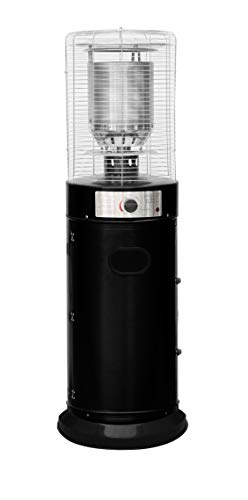Garden Heating Solutions: Enhancing Outdoor Spaces Year-Round
As seasonal modifications bring differing temperatures, garden enthusiasts face the difficulty of keeping their treasured outdoor areas. Whether for cultivating plants, entertaining guests, or merely enjoying the fresh air, garden heating solutions are crucial to taking full advantage of enjoyment and functionality. This short article checks out different options offered for heating gardens, including standard and modern solutions, their benefits, and practical ideas for execution.
Understanding the Need for Garden Heating
A well-kept garden should be a year-round sanctuary, using reprieve in both summer and winter season. The need for garden heating arises from:
- Frost Protection: Certain plants, specifically tender varieties, need protection from frost to endure chillier months.
- Extended Growing Seasons: Heating solutions can enable earlier planting in spring and later on harvesting in fall.
- Convenience Optimization: Outdoor events and activities can occur more comfortably with controlled temperatures.
Types of Garden Heating Solutions
Garden heating solutions can be divided into several categories based on their innovation and fuel source. Here's a detailed appearance at some popular options:
1. Electric Heaters
Electric heaters are a flexible option for smaller gardens and outdoor patios. They are easy to set up and run, offering instant heat with minimal effort.
- Kinds Of Electric Heaters:
- Patio Heaters: Freestanding systems with a heating component that radiates heat.
- Wall-mounted Heaters: Ideal for small spaces; these heaters conserve ground space while providing warmth.
- Portable Electric Fans: Great for targeted heating in specific locations.
2. Gas Heaters
Gas patio heaters are a standard choice for outdoor heating and are extensively valued for their efficiency and visual charm.
- Types of Gas Heaters:
- Propane Heaters: Easy to carry and set up, suitable for most outdoor settings.
- Gas Heaters: Permanent components, suitable for locations with existing gas lines.
3. Wood-burning Solutions
For a rustic touch, wood-burning solutions such as fire pits and chimineas add warmth and ambiance to gardens.
- Benefits and drawbacks of Wood-burning Heating:
- Advantages: Aesthetic appeal, social atmosphere, and reliable heat circulation.
- Disadvantages: Requires more maintenance, management of ashes, and possible fire risks.
4. Infrared Heaters
Infrared heaters utilize infrared radiation to straight warm objects, making them energy-efficient and perfect for outdoor spaces.
- Advantages: Immediate heat, minimal energy loss, and viability for all climate condition.
5. Outdoor Heating Mats and Blankets
For smaller sized patio locations or particular zones in a garden, heating mats and blankets can be an ingenious option to provide an additional layer of warmth.
Considerations for Choosing a Heating Solution
When selecting the best heating service for a garden, numerous elements should be assessed:
- Garden Size: Larger areas may require multiple heating sources for effective warmth.
- Budget plan: Various options exist at different price points. Outdoor Heater Uk -effectiveness can determine the picked technique.
- Security: Evaluate the safety functions of the heating options, particularly when using gas or wood-burning solutions.
- Visual Appeal: Integration with garden style can improve general visual satisfaction.
Table 1: Comparison of Garden Heating Solutions
| Type | Installation | Fuel Source | Effectiveness | Cost |
|---|---|---|---|---|
| Electric Heater | Easy | Electricity | Rapid/Immediate | Moderate |
| Gas Heater | Moderate | Propane/Natural | High/Effective | Moderate to High |
| Wood-burning Option | Moderate/Hard | Wood | Reliable | Low to Moderate |
| Infrared Heater | Easy | Electrical power | Immediate | Moderate to High |
| Heating Mats/Blankets | Easy | Electricity | Targeted | Low to Moderate |
Executing Garden Heating Solutions
To ensure effective heating in outdoor settings, a strategic technique is essential. Here are some useful tips:
- Evaluate the Layout: Consider the garden layout to determine areas where heating is most needed.
- Select Multidirectional Heaters: This will help distribute heat more evenly across the space.
- Improve Insulation: Utilize windbreaks (like garden walls) or heat-retaining products around the heating setup.
- Incorporate Decor: Attractive designs of heating systems can boost the garden's ambiance while supplying warmth.
- Regular Maintenance: Ensure that heaters (specifically gas and wood-burning) are kept for ideal efficiency and safety.
FAQs About Garden Heating Solutions
1. How safe are electric heaters for outdoor usage?
Electric heaters developed for outdoor use are usually safe when installed correctly. Always follow producer guidelines and safety directions to reduce threats.
2. Can I leave my gas heater outside during winter season?
While numerous gas heaters are built for endurance outdoors, it's suggested to cover them or keep them indoors to safeguard them from harsh climate condition.
3. Exist energy-efficient options for heating my garden?
Yes! Infrared heaters and heating mats are especially energy-efficient as they focus heating in particular areas instead of warming the surrounding air.
4. What are the very best plants to grow in a heated up garden?
Popular options consist of tomatoes, herbs, peppers, and other tender plants that thrive in temperature levels above 50 ° F (10 ° C).
Garden heating solutions tremendously enhance outdoor spaces, enabling year-round pleasure and enhanced plant growth. By understanding the different types of heating options offered and making informed choices based upon personal preferences and particular garden conditions, garden enthusiasts can transform their outdoor locations into relaxing retreats, no matter the season.

